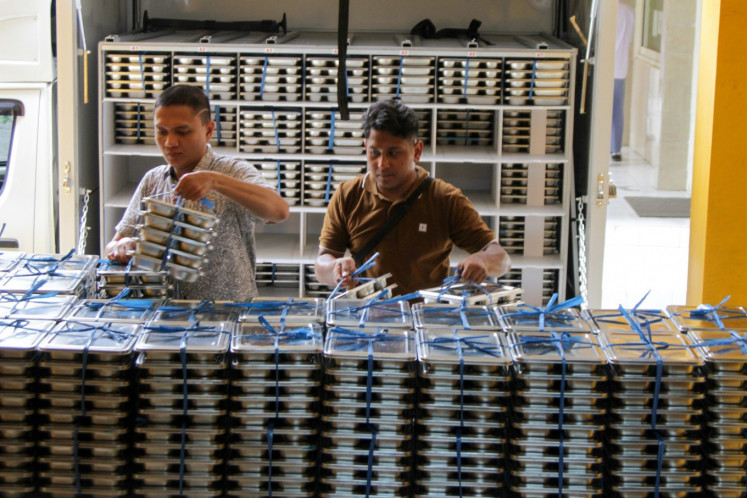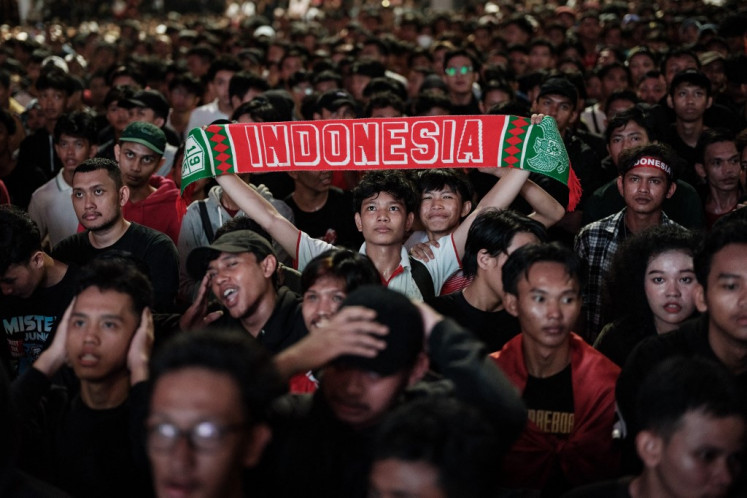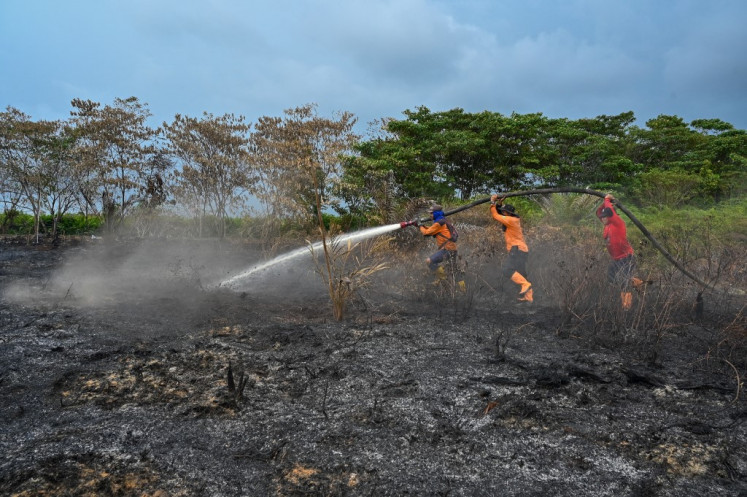Development of renewable energy need better rules
The government has set an ambitious target to increase its renewable portion in the country’s energy mix to 23 percent by 2025 from about 12 percent at present
Change text size
Gift Premium Articles
to Anyone

T
he government has set an ambitious target to increase its renewable portion in the country’s energy mix to 23 percent by 2025 from about 12 percent at present.
Throughout this year alone, the state power monopoly PLN has signed over 55 power purchase agreements (PPAs) for renewable energy. Energy and Mineral Resources Minister also recently announced that the government would not approve any new coal-fired power plants on the heavily populated island of Java.
On another side, corporate demand for renewable energy is also growing, as more than 110 multinational companies to date have made “100 percent renewable” commitments, widely known as the RE100 campaign.
The ambitious target and renewable energy demand put pressure on the Indonesian government to revise power sector regulations. Under these circumstances, the ministry issued four power sector regulations in 2017 that were quickly amended or replaced due to investors’ negative reception. Renewable energy regulation is among those four regulations.
The ministry’s Regulation No. 50/2017 on use of renewable energy for power generation (Reg 50/2017), which replaced the previous regulation No. 12/2017 and its amendment, officially stopped feed-in-tariff for renewable energy, replacing it with a maximum threshold of purchase price determined based on Generation BPP.
Generation BPP is average basic cost incurred by PLN for electricity generation in certain locations in Indonesia, excluding electricity transmission and distribution costs. Local and national Generation BPPs are annually determined by the above ministry. For April 2017 to March 2018, the applicable national Generation BPP 7.39 US cents per killowatt hour (kWh) and local Generation BPP for the Java-Bali grid is 6.52 cents/kWh.
Under Reg 50/2017, if local Generation BPP is higher than national Generation BPP, the maximum threshold of renewable energy purchase price by PLN is only 85 percent of local Generation BPP. The maximum threshold of 100 percent of local Generation BPP applies only to hydro and geothermal energy. If local Generation BPP is equal to or less than national Generation BPP, the purchase price will be determined based on negotiations. Although not expressly regulated, the maximum threshold in this case will likely refer to national Generation BPP.
However, as Generation BPP is calculated by averaging generation costs of all power plants within the area, it should be noted that (1) power plants in one location utilize different resources and have different capacities; and (2) are not developed and operated at the same time, thus exposing the costs to price differences. This leads to one major question: is Generation BPP determined based on apple-to-apple comparison and truly reflects reasonable renewable energy generation costs? Investors doubt that.
Project bankability is another concern in Indonesian renewable energy. In 2017, the ministry also issued Regulation No. 10/2017 on Principles in Power Purchase Agreement (Reg 10/2017), which, for the first time in any material way, seeks to regulate certain requirements as to what provisions must be built into PPAs. Key points on bankability and risk allocation that are usually left to negotiations between PLN and the project owner are now addressed in Reg 10/2017. Although the Ministry has addressed one of investors’ major concerns (i.e. government force majeure risk allocation) through Reg 10/2017 amendment, several other concerns are still left untouched.
Despite the challenges, opportunities still exist for renewables investors in 2018. In practice, PLN applies a merit order system in determining its dispatch, by prioritizing power plants with the lowest cost to operate rather than costlier power plants. Considering energy cost is usually the largest component in electricity purchase price, this will set an advantageous position for renewable energy power plants, where the energy cost is minor to none.
Further, looking far beyond concerns in Reg 50/2017 and Reg 10/2017, it is worth highlighting that both regulations only apply to independent power producers (IPP) scheme, where the investor generates and sells electricity only to PLN. In this regard, investors may want to explore a private power utility (PPU) scheme, where the investor directly handles electricity generation, transmission, distribution, to sales to customers in certain area, rather than to PLN.
Through the PPU scheme, the investor may seek opportunities in green-field locations (e.g. new industrial estates or special economic zones). Specifically for undeveloped rural areas, remote regions, border areas, and small inhabited islands, the government’s subsidy can also be granted to investors who are interested in becoming “mini PLN” through PPU scheme (max. 50Megawatts).
Opting for the PPU scheme may enable investors to avoid issues under Reg 50/2017 and Reg 10/2017. In the PPU scheme, the electricity tariff will only be subject to local government’s approval. Dependability to PLN’s dispatch as well as risks of regulatory and policy changes can also be avoided. Unlike the IPP scheme, which is more exposed to regulatory and policy changes due to its tight relation to PLN’s interest, the PPU scheme provides more stability in this matter.
Obtaining a business area determination from the ministry may become the main challenge for the PPU scheme. Considering PLN acts on behalf of the government as owner of all electricity business locations in Indonesia, the ministry heavily relies on PLN’s decision to assess whether a business location can be granted to a private party. In this case, thorough study on PLN’s existing or projected capability in covering electricity demand in a business location will be helpful for investors.
All in all, we hope the ministry can quickly reassess renewables regulations. Amendment and replacement of 2017’s controversial regulations have shown the ministry’s responsiveness towards stakeholder’s inputs although not addressing all of the investors’ concerns. Driven by the government’s ambitious renewable energy target, it is not impossible for more renewable energy friendly regulations to be issued in the near future.
__________________________
The writers are power infrastructure lawyer and counsel at Bahar & Partners Law Firm.









